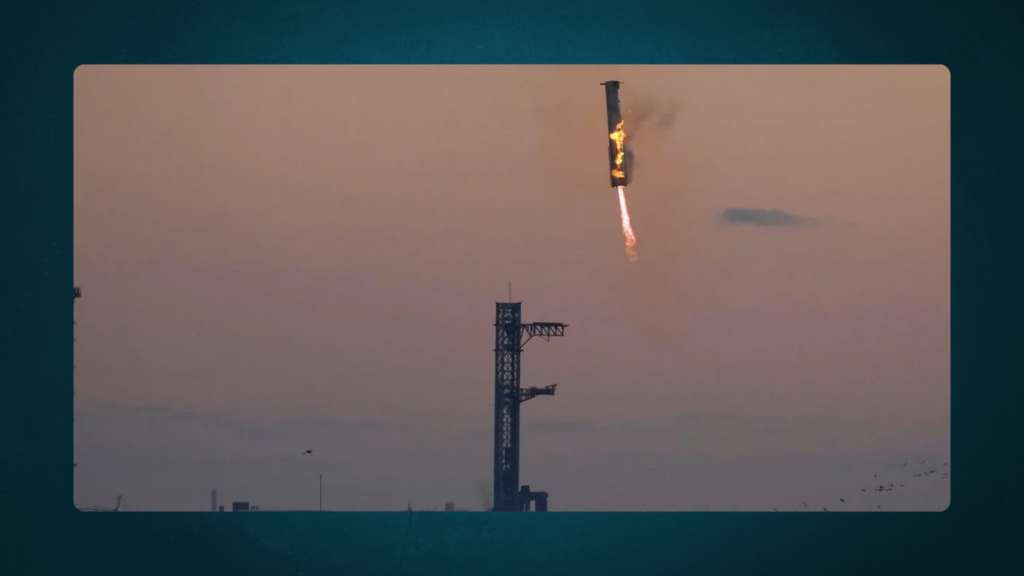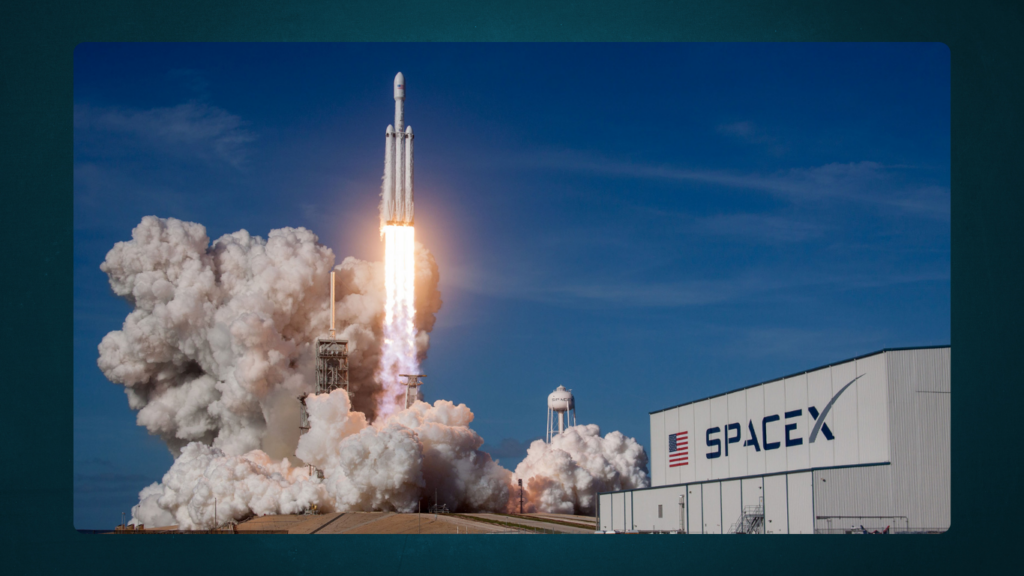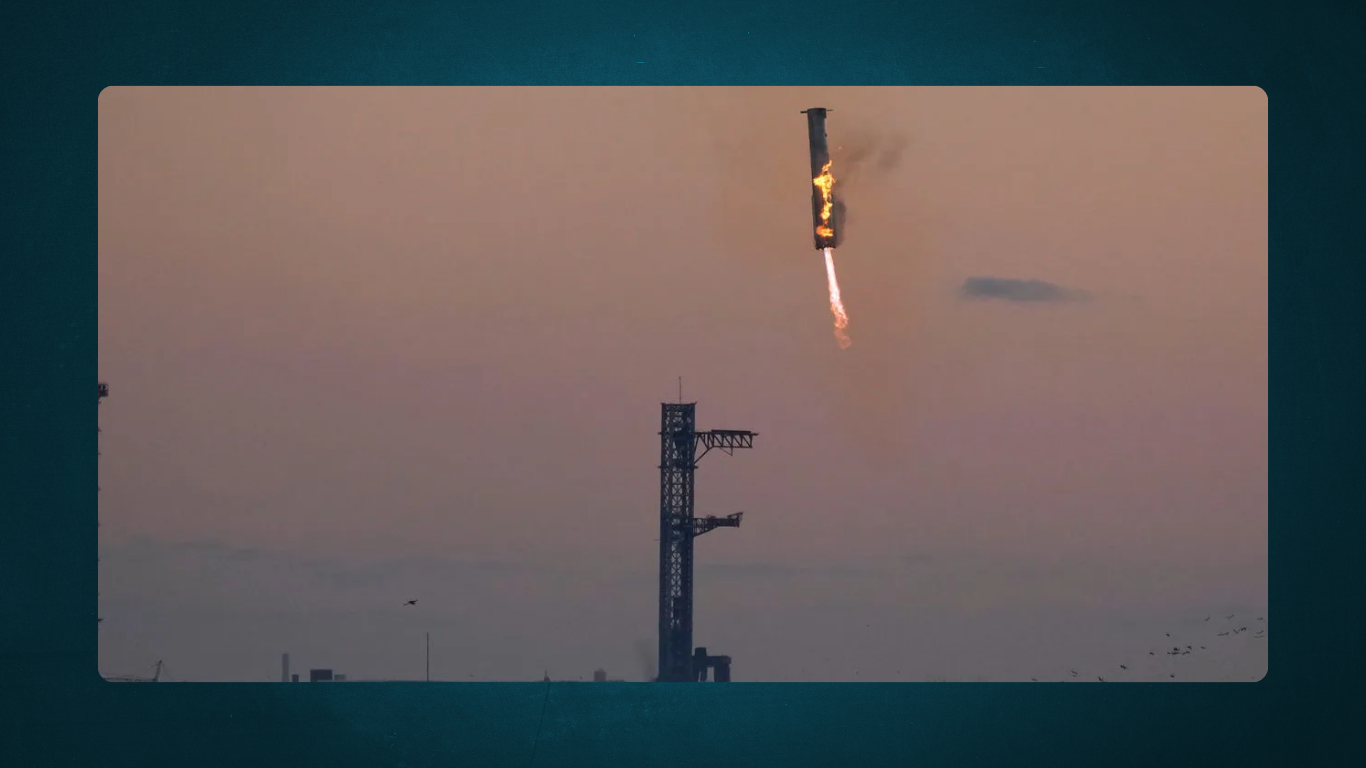SpaceX Achieves Historic Milestone with Fifth Starship Test Flight, Successfully Catches Booster Mid-Air Using Mechanical Arms
SpaceX reached another major milestone on Sunday in its ongoing effort to revolutionize space travel with reusable spacecraft. During its fifth Starship test flight, the company executed a highly ambitious maneuver by successfully returning the massive “Super Heavy” first-stage booster to its Texas launch pad. For the first time, the booster was caught mid-descent using enormous mechanical arms attached to the launch tower, marking a key achievement in SpaceX’s quest to create a fully reusable moon and Mars rocket.

The test commenced at 7:25 a.m. CT (1225 GMT) from SpaceX’s Boca Chica launch facility. The Super Heavy booster, standing 233 feet tall (71 meters), lifted off and propelled the Starship second stage toward space. After reaching an altitude of roughly 70 km (40 miles), the booster separated and began its dramatic descent back to Earth, marking the most daring part of the mission.
To execute the return, the Super Heavy booster reignited three of its 33 powerful Raptor engines to slow down as it targeted the very launch pad from which it had just launched. The towering 400-foot (122 meters) launch tower, fitted with two massive mechanical arms, was ready to catch the booster—a critical step in SpaceX’s strategy to develop a reusable rocket system. The booster’s grid fins, used to steer through the air, guided it precisely to the arms, which latched onto tiny bars beneath the fins, securing the rocket in place. “The tower has caught the rocket!!” SpaceX CEO Elon Musk announced on X (formerly Twitter), as cheers erupted from engineers watching the event on the company’s live stream.
This unique recovery method is part of SpaceX’s larger test-to-failure approach, which involves pushing the rocket’s limits to gather valuable data and improve its systems. The company is pushing hard to develop a fully reusable rocket capable of carrying large cargo, astronauts to the moon, and ultimately, humanity to Mars—a long-term goal envisioned by Musk.
While the booster was safely returning to the launch pad, the Starship second stage continued its journey through space. Traveling at speeds of up to 17,000 miles per hour, the spacecraft reached an altitude of 89 miles as it aimed for a controlled splashdown in the Indian Ocean near western Australia. As Starship reentered Earth’s atmosphere, onboard cameras captured stunning footage of the ship surrounded by glowing plasma, a pinkish-purple hue caused by intense heat from hypersonic speeds. The spacecraft’s heat shield, made up of 18,000 improved heat-resistant tiles, appeared to hold up well, a significant improvement from a previous test in June when tile damage made reentry difficult.
Starship eventually re-ignited one of its six Raptor engines to position itself for a simulated ocean landing. It touched down in the dark waters off Australia’s coast, but shortly after landing, the ship exploded into a fireball. The cause of the explosion remains unclear—whether it was a controlled detonation or the result of a malfunction such as a fuel leak—but it didn’t dampen the mood at SpaceX, as the successful touchdown was a key objective. Musk later confirmed on social media that the Starship had “landed precisely on target!”

This test flight marked the second time Starship completed a full mission, following its first full test in June. Previous attempts had ended in explosions, but SpaceX has made significant strides in improving the vehicle’s design. The catch-landing method using mechanical arms is a novel and bold approach, showing SpaceX’s commitment to innovation in reusable rocket technology.
The test took place after the U.S. Federal Aviation Administration (FAA) approved SpaceX’s launch license just a day earlier, following several weeks of discussions and scrutiny over SpaceX’s launch practices. The success of the test could help streamline future launches and pave the way for additional tests as SpaceX moves closer to its goal of developing the world’s first fully reusable rocket system.
As SpaceX pushes the boundaries of space technology, this successful test flight serves as another significant step in its mission to make space exploration affordable and sustainable. Starship is central to that vision, with plans for it to support NASA’s Artemis program and eventually fulfill Musk’s dream of colonizing Mars. This test brings humanity one step closer to making those aspirations a reality.

Subtly charming pop culture geek. Amateur analyst. Freelance tv buff. Coffee lover
